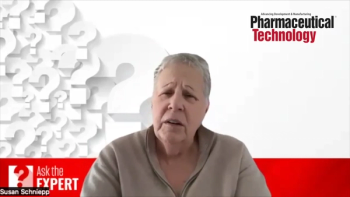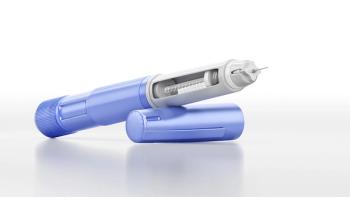
- BioPharm International-02-01-2016
- Volume 28
- Issue 2
Innovative Therapies Require Modern Manufacturing Systems
FDA and industry see progress and challenges in bringing cutting-edge medicines to patients.
FDA set a 19-year record in 2015 in approving more new drugs and biologics, and agency officials expect this pace to continue. Manufacturers are testing a full pipeline of important, new therapies to treat both rare diseases and widespread serious conditions such as high cholesterol, diabetes, multiple myeloma, and a range of cancers. More biosimilars are poised to come to market in 2016 following FDA approval of the first such therapy in 2015. At the same time, though, the development of such innovative and targeted therapies heightens the importance of establishing production systems and processes capable of fast scale-up of high-quality complex products.
The surge in new drug development will be encouraged by increased public support for biomedical research and innovation, led by President Obama’s campaign to cure cancer. Presidential hopefuls are championing medical cures, as seen in Hillary Clinton’s proposal to boost Alzheimer’s research. The 2016 budget bill approved by Congress at the end of 2015 increased funding significantly for the National Institutes of Health (NIH) and other government research programs, while providing a small, but encouraging increase in FDA’s appropriation.
The spending measure directs NIH to allot portions of its $2 billion budget boost to Alzheimer’s disease research, precision medicine, the Brain Research through Advancing Innovative Neurotechnologies (BRAIN) initiative, and development of antimicrobial medicines. The development of new antibiotics gained from several spending provisions: in addition to $100 million to NIH for that purpose, the Centers for Disease Control and Prevention (CDC) received $160 million to prevent and monitor superbug outbreaks, and the Biomedical Advanced Research and Development Authority (BARDA) received nearly $100 million to help test new therapies and diagnostics to protect against infectious disease threats.
FDA also was instructed to improve its oversight of antibiotics as part of its $2.7 billion appropriation for 2016. Most of its $132 million budget increase goes to expanding food safety programs, but small amounts are allotted to ensuring the accuracy of genetic tests important to precision medicine, expanding foreign inspections of high-risk operations, and supporting orphan drug development. The
Legislative action further made permanent the federal R&D tax credit, a long-sought change expected to boost private sector investment in biotech companies. Medical device makers gained a two-year delay in paying a new tax authorized by the Affordable Care Act (ACA), which manufacturers say will promote device innovation. And the legislators extended the rare pediatric disease priority review voucher program until September 2016 to keep it going until Congress can review and reauthorize it.
Manufacturing concerns
These developments generate optimism that scientists finally will begin to transform the treatment of disease based on decades of important genomic research. FDA’s Center for Drug Evaluation and Research (CDER) approved 45 new molecular entities (NMEs) and biotech therapies in 2015, beating the near-record set in 2014. FDA’s Center for Biologics Evaluation and Research (CBER) also approved more than a dozen new biologics, vaccines, blood products, and diagnostics.
In the process, FDA met nearly all the review timeframes and goals set by the Prescription Drug User Fee Act (PDUFA V), reported John Jenkins, director of CDER’s Office of New Drugs (OND), at the FDA/CMS Summit in December 2015. Jenkins noted that most NMEs were approved in one review cycle; more new drugs reached the market first in the United States; and CDER continues to receive hundreds of requests from manufacturers for breakthrough drug designations, a
Jenkins voiced concern, however, about the continued emergence of new therapies, noting the need for FDA to assist pharmaceutical manufacturers seeking to accelerate the production timeframes for more targeted and complex medical products. In developing and bringing to market important new therapies, Jenkins noted, it’s “often manufacturing and inspections that are the rate-limiting steps” for expedited approvals, not clinical development. CDER often faces difficulties in scheduling timely preapproval inspections within the six-month review timeframe for breakthrough drugs, he explained, and small biotech companies have run into difficulties with contract manufacturers that have quality and data problems uncovered during plant inspections.
FDA seeks to avoid such issues by clarifying policies and offering new solutions to drug development and manufacturing challenges. A
Global harmonization
Further global harmonization of drug-development policies also is on the horizon following major changes at the International Council for Harmonisation (ICH). The organization now seeks more involvement of regulatory authorities and manufacturers in Asia, Africa, and the Americas in the ICH standards-setting process. FDA, the European Medicines Agency, and other established authorities, moreover, are collaborating more to avoid duplication in drug facility inspections and in the registration of innovative medicines for rare conditions and for children.
FDA also is under pressure from Congress to expand its capacity for conducting foreign drug inspections. The House Energy & Commerce (E&C) Committee recently asked the Government Accountability Office (GAO) to examine the effectiveness of FDA foreign drug inspections and overseas offices in the face of ever-expanding imports of drugs and APIs. Both Republicans and Democrats
Biosimilar development will remain in the spotlight, along with efforts to ensure the safety and quality of “complex” generic drugs that are not regulated as biologics, but are more diverse than conventional drugs. The legislators have
References
1. Division A-Agriculture, Rural Development, Food And Drug Administration, And Related Agencies Appropriations Act, 2016 Congressional Directives,
2. J. Jenkins, MD, CDER New Drug Review: 2015 Update, FDA/CMS Summit, Dec. 14, 2015,
3. FDA, 21 CFR Parts 300, 330, and 610, Fixed-Combination and Co-Packaged Drugs: Applications for Approval and Combinations of Active Ingredients Under Consideration for Inclusion in an Over-the-Counter Monograph, Federal Register, 80 (246), Dec. 23, 2015,
4. FDA, Advancement of Emerging Technology Applications to Modernize the Pharmaceutical Manufacturing Base Guidance for Industry, Draft Guidance (CDER, December 2015).
5. US House of Representatives Energy & Commerce Committee, Bipartisan Committee Leaders Enlist Government Watchdog on FDA’s Foreign Inspection Program, Dec. 18, 2015,
6. US House of Representatives Energy & Commerce Committee, Letter to GAO Requesting a Study on FDA’s Pathway to Review Generic Non Biologic Complex Drugs, Dec. 11, 2015,
Article DetailsBioPharm International
Vol. 29, No. 2
Pages: 8–9
Citation:
When referring to this article, please cite it as J. Wechsler, "Innovative Therapies Require Modern Manufacturing Systems," BioPharm International 29 (2) 2016.
Articles in this issue
almost 10 years ago
Antibody Production in Microbial Hostsalmost 10 years ago
Advances in Assay Technologies for CAR T-Cell Therapiesalmost 10 years ago
Macro Mattersalmost 10 years ago
Fine Tuning the Focus on Biopharma Analytical Studiesalmost 10 years ago
Biopharma Innovation Born Again?almost 10 years ago
Failure Mode Effects Analysis for Filter Integrity Testingalmost 10 years ago
The Emerging View of Endotoxin as an IIRMIalmost 10 years ago
Use of an E. coli pgi Knockout Strain as a Plasmid Produceralmost 10 years ago
BioPharm International, February 2016 Issue (PDF)Newsletter
Stay at the forefront of biopharmaceutical innovation—subscribe to BioPharm International for expert insights on drug development, manufacturing, compliance, and more.




